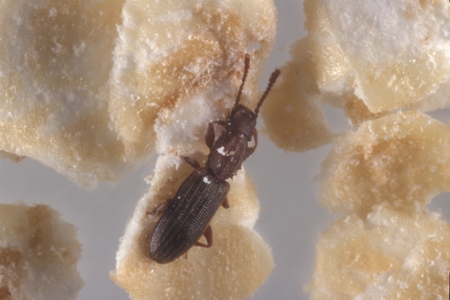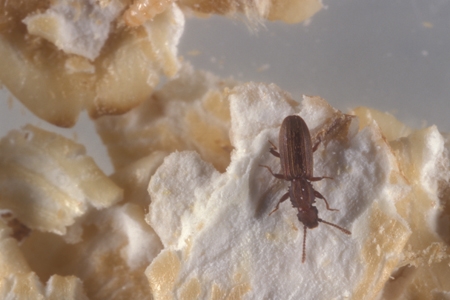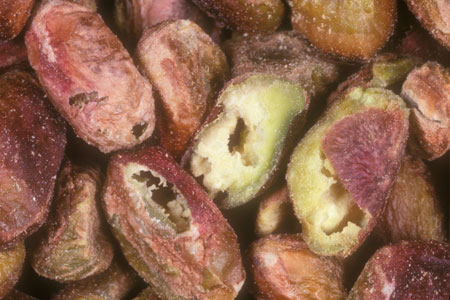Active Seasons




Sawtoothed Grain Beetles Appearance and Size Facts
Sawtoothed grain beetles are named for the distinctive saw-like projections on each side of their head. They are tiny, flightless scavengers known for infesting stored food products like sugar and grains. These reddish-brown beetles are approximately 1/10 inch long and have flattened bodies, allowing them to easily squeeze through even the smallest cracks and making them difficult to spot with the naked eye.
Distinguishing Sawtoothed Grain Beetles From Other Beetles
Distinguishing sawtoothed grain beetles from other beetles can be challenging due to their small size and similar appearances, but there are specific details you can watch for. Look for the six sawtooth-like projections from their parathorax or “neck.” If you suspect an infestation but are unsure, reach out to Hulett. We will identify the level of risk in your home to create a personalized treatment.
We provide beetle control for sawtoothed grain beetles in the following locations and their surrounding areas:

Behavior and Habitat of Sawtoothed Grain Beetles
Sawtoothed grain beetles are external feeders, preferring finely divided food particles over whole grains. Incapable of flight, adults and larvae crawl to find new food sources, often invading every package or food item near an infested product. Their life cycles can last from six to 10 months, with females laying an average of 300 eggs during this period.

Signs of Infestation of Sawtoothed Grain Beetles
If you observe small beetles in pantry products or crawling on surfaces like counters or shelves, it may indicate a sawtoothed grain beetle infestation. Additionally, chewed-through packaging or insect debris around stored food items could indicate their activity.

Tips for Prevention of Sawtoothed Grain Beetles
To prevent sawtoothed grain beetle infestations, promptly discard any infested foods. Regularly vacuum pantry shelves, cracks, and crevices, ensuring proper disposal of the vacuum bag away from the home. If you see sawtoothed beetles on your counter, try wiping down the surface with soap or lemon oil to repel these pests without harming your plants.
Getting Rid of Sawtoothed Grain Beetles
Thorough cleaning and proper food storage are the first two steps to preventing sawtoothed grain beetles, but once they are inside, it’s time to call Hulett. Our trained pest removers will identify where these tiny pests hide and any others that infest your home so all your pest problems are solved.
Effective Sawtoothed Grain Beetle Control Solutions
For targeted and efficient sawtoothed grain beetle control, enlist the expertise of pest control professionals. Hulett Environmental Services offers comprehensive pest treatments, ensuring the identification and elimination of entry points, along with the application of effective control measures. Schedule your free inspection online or contact us today for a pest-free home.



